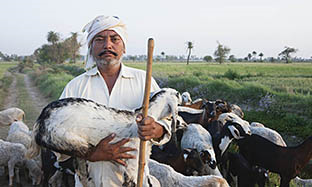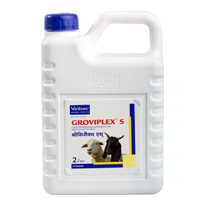How Less body weight gain is challenge in sheep and goat rearing?
Sheep and goat breeds are selected worldwide for meat, wool, and dairy production, and breeding objectives also include other functional traits such as reproductive performance and disease resistance. The availability of such high throughput DNA methods and tools in recent years has opened up the use of genome-wide information for sheep and goat breeding.
Compared with the use of genomic information for cattle, the higher cost of genotyping relative to the value of the animal is still a strong economic barrier to the uptake of such new technology in sheep and goat breeding.
Similarly, many valuable traits can be measured in both sexes before reproductive maturity (growth, ultrasound carcass measures, and some disease resistance measurements) so that the potential to accelerate genetic progress is also less compelling.
The gains of reliability provided by molecular information were lower than for cattle with respect to reference population size, which is probably due to lower linkage disequilibrium (LD) due to higher effective population size and inclusion of crossbreds in sheep and goats.
Also, genomic evaluation methods can substantially improve the accuracy of GEBV estimation when applied to small ruminants and therefore accelerate response to selection. Indeed, the accuracy of methods that use only phenotypes of the genotyped animals and ignore records of the non-genotyped part of the population (e.g., GBLUP and BLUP-SNP) is limited when the reference population is small.
Therefore, a single-step approach is the recommended method for such small reference populations.
It integrates all of the available phenotypic, pedigree, and genomic information in a single-step procedure to calculate genomic breeding values some sheep breeders use juvenile in-vitro fertilized embryo transfer (JIVET), which consists of harvesting immature oocytes from 6- to 8-wk-old ewe lambs and implanting these into sexually mature individuals after in vitro fertilization.
The combination of genomic selection and JIVET has considerable potential to increase genetic gain for novel traits.



